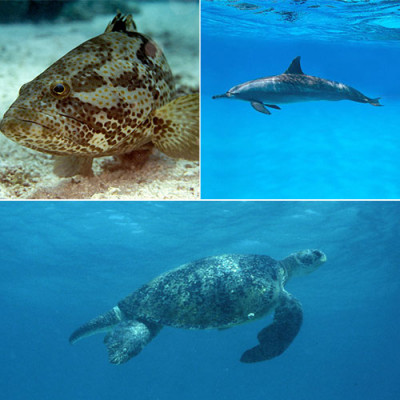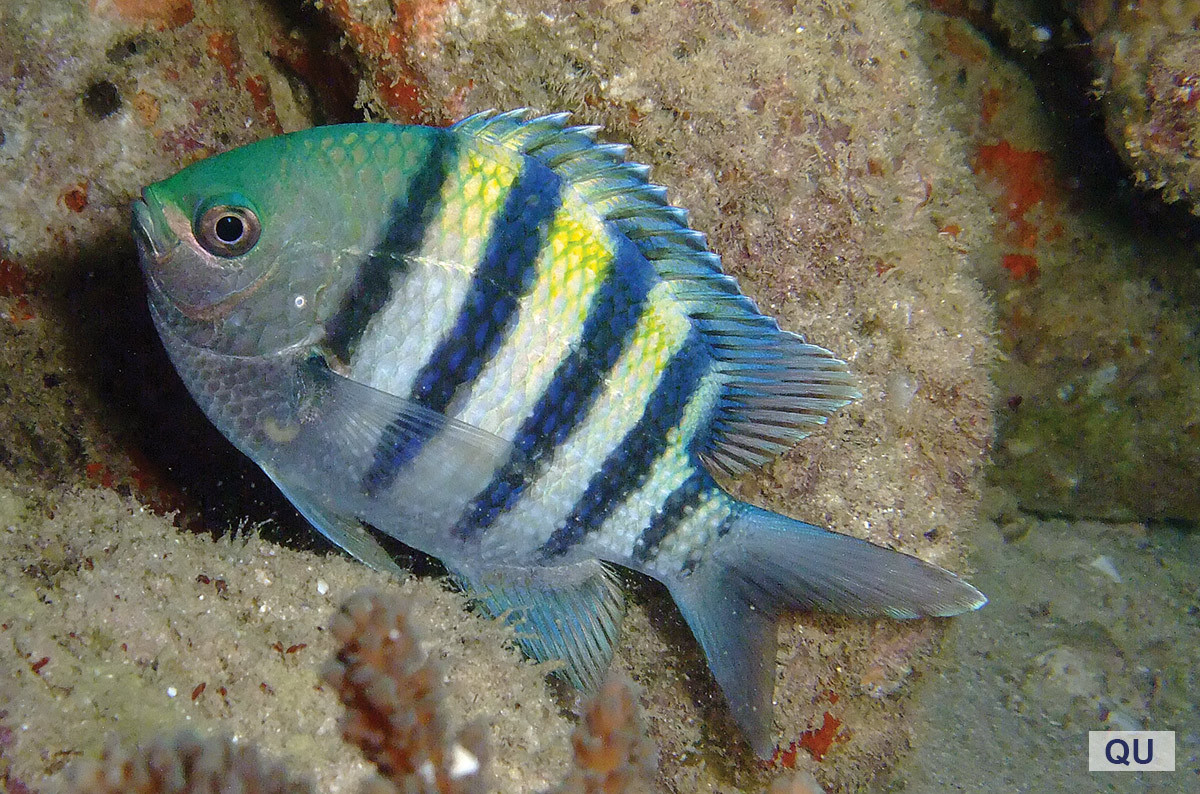الاسم: سمكة الرقيب للمحيطين الهندي والهادي
الاسم الشائع: قعيسي
الاسم العلمي: Abudefduf vaigiensis
التصنيف: الصف: الأسماك شعاعية الزعانف. الرتبة: أسماك أشباه الفرخ. العائلة: أسماك الأنسة (Pomacentridae).
ترادف: Abudefduf saxatilis
القياس: يصل أقصى طول لها إلى ثمانية عشر سنتيمتراً.
موطن:
يعيش البالغون بالقرب من الحواف العليا من منحدرات الشعاب المرجانية وفي الغالب على شكل جماعات تتغذى على العوالق الحيوانية في وسط المياه. وتتغذى أيضاً على الطحالب القاعية واللافقاريات الصغيرة ويرتبط اليافعون من هذه الأسماك مع الأعشاب البحرية المنجرفة. تتواجد سمكة الشاويش الهندي-الهاديء بأعداد كبيرة في مواقع التفريخ، ويتزامن ذلك مع شدة المد والجزر والذي يحمل أنسالها بعيداعن الشاطئ. هذا النوع واضع للبيض، وينفرد بإقتران مميز خلال فترة التكاثر. تضع الإناث بيضها في القاع، حيث تلتصق به ويقوم الذكر بحراستها وتهويتها.
التوزيع:
ينتشر هذا النوع على نطاق واسع في المناطق الاستوائية في المحيطين الهندي والهادئ، ومن البحر الأحمر وشرق أفريقيا غرباً إلى جزر توياماتو شرقاً ومن اليابان شمالاً إلى أستراليا جنوباً.
حالة حفظ النوع:
لم يتم تقييم هذا النوع عالمياً في القائمة الحمراء للأنواع المهددة بالانقراض الصادرة عن المجلس العالمي لصون الطبيعة. وفي تقييم حديث إقليمي لمنطقة الخليج العربي صنفت على أنها معرضة للإنقراض. يعد هذا النوع من الأنواع المهمة في تجارة أسماك الزينة.
الشرح:
الجسم عميق ومعتدل ومنضغط والفم صغير وطرفي. الزعنفة الذيلية ثنائية التفرع. لون خلفية الجسم رمادي مخضروغالباً ما يكون مخضب باللون الأصفر من المنطقة الظهرية، ويتدرج إلى الأبيض المخضر من الناحية البطنية. حواف الحراشف أغمق من مراكزها. هناك خمسة أشرطة زرقاء غامقة إلى سوداء اللون على الجسم تصبح ضيقة نحو المنطقة البطنية. يكون لون الزعانف في العادة أزرق مخضر أوشفاف.








